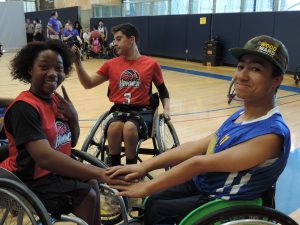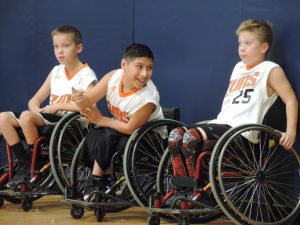Ability 360: Changing the Game for Athletes with Disabilities
Recently I attended a junior’s wheelchair basketball tournament at Ability 360. This is a 62,000-square-foot universally designed, accessible and transit-oriented non-profit resources center serving the disability community in the Greater Phoenix, Arizona Metropolitan area. The Center is a national model for social inclusion, accessible design and collaborative programming.
The facility is designed to bring people together with all different types of disabilities, of all ages, to encourage wellness, physical fitness and nutritional health. It is a real space for innovation in social inclusion and peacebuilding.
The 45,000-square-foot sports fitness and aquatics center is the first of its kind in the Western United States. The tournament was organized and sponsored by Arizona Disabled Sports (ADS), an organisation that I had contacted before I left Nepal. The ADS motto is, “Let No One Sit on the Sidelines”.
ADS is an NGO dedicated to providing sports and recreation opportunities for individuals with all types of disabilities. This includes but is not limited to developmental disabilities, orthopedic impairment, sensory deficit and/or neurological involvement. ADS provides year round sports training and competition. They also work with the Mesa Public Schools and the City of Mesa Parks, Recreation and Commercial facilities to provide a comprehensive program of sports and recreation to individuals with disabilities of all ages.
It takes a tremendous amount of effort to organize a tournament. The Arizona Spinal Cord Injury Association supported this most recent effort by providing transportation to/from the airport and to Ability 360. I was also very impressed with the organisation of the tournament and how efficiently resources were used. 93% of funds from grants, fundraisers and donations, etc. go directly for sports.
For example, in Nepal there are a number of organisations such as Nepal Spinal Cord Injury Sports Association, National Federation of the Disabled Nepal and Khagendra New Life Centre, as well as ENGAGE that are working to create more opportunities for youngster with disabilities. However, the missing link seems to be solid and long-lasting collaborations.
One might look at the US and say, “they have lots of resources and therefore they can afford to build a place such as Ability 360 which specifically caters to persons with disabilities”. But the fact is, that this took years and multiple resources to bring to fruition. I have hope that Nepal will also be an example of best practices when it comes to providing opportunities for persons with disabilities but it will take cooperation.
Gary Vanjohn, who is the “father” of wheelchair basketball in Arizona and a real inspiration for many athletes with a disability, told me that he felt that wheelchair sports, persons with disability being out and wanting more led to the American with Disabilities Act. This created more societal inclusion. But it also works the other way, i.e. when the able bodied society realizes that we are all equal, that we should remove barriers, then people with disability, or of various ethnic backgrounds, religions and sexual orientations become part of an inclusive society.
We must start doing this as children are growing up, an example of which is occurring in Arizona with children with disabilities and their ability to participate in all societal aspects. I always felt that nothing was ever impossible in Nepal and I still believe this.
Disclaimer: The views and opinions expressed in Peace and Sport Watch are those of the authors and do not necessarily represent the views of Peace and Sport.



